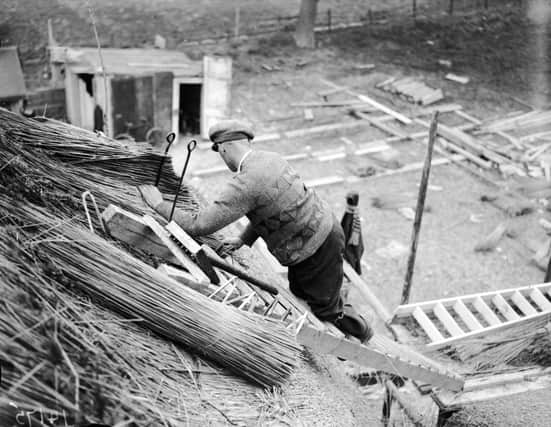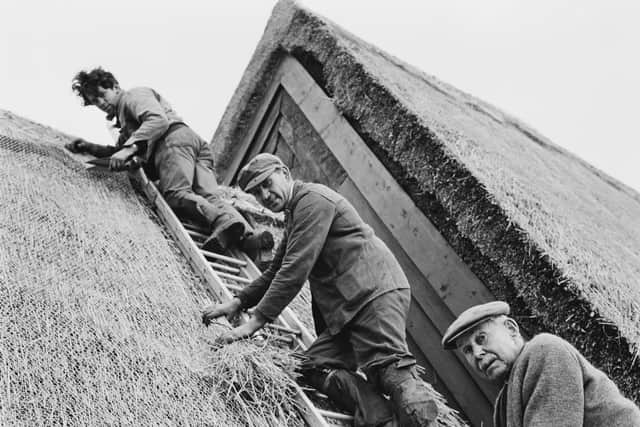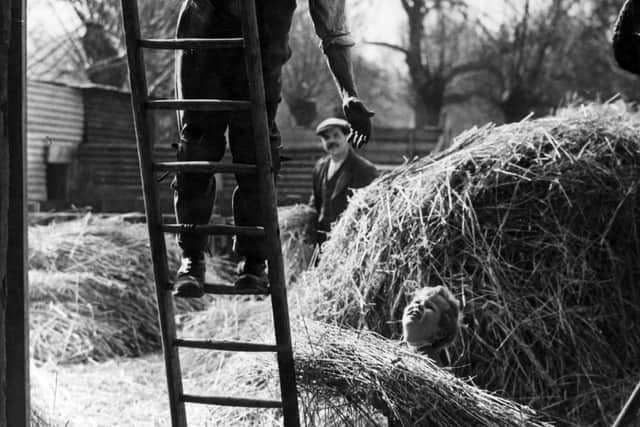Rare pictures of the thatched roofs of old England


Thatching has been – literally – a cottage industry since Norman times, and as these rare pictures from the archive illustrate, it is a craft that has endured ever since.
Often associated with the Cotswolds, thatched houses are in fact spread across Britain and the techniques and materials vary from region to region. In Scotland, broom, rushes, cereals, bracken, turf and clay, as well as heather, have been used over the years.
Advertisement
Hide AdAdvertisement
Hide AdThe oldest surviving thatched houses in England date back to the 14th century, and some of the lower layers of thatching betray evidence of medieval soot that has remained intact beneath the newer layers above it.


Throughout the centuries that followed, thatched roofs increased in number, but also in danger. Straw was cheap and plentiful, but the risk in densely populated areas of fire spreading from one roof to another mitigated against their use. The industrial revolution, which brought with it cheap slate quarried in Wales, consigned thatched cottages to the realms of romance for most people.
Those that remain – some 60,000 of them in the UK – are mostly protected from development – though not from nature. Birds sometimes see them as giant nests or as sources of food, and the natural materials can decay and decompose over time. Insurance costs are higher than for modern roofs and maintenance much more labour intensive and specialised.
On the other hand, thatch is a natural insulator that will keep a house cool in the summer and warm in the winter, and their scarcity means that cottages with thatched roofs command premium prices on the market.
Advertisement
Hide AdAdvertisement
Hide AdEditor’s note: first and foremost - and rarely have I written down these words with more sincerity - I hope this finds you well.


Almost certainly you are here because you value the quality and the integrity of the journalism produced by The Yorkshire Post’s journalists - almost all of which live alongside you in Yorkshire, spending the wages they earn with Yorkshire businesses - who last year took this title to the industry watchdog’s Most Trusted Newspaper in Britain accolade.
And that is why I must make an urgent request of you: as advertising revenue declines, your support becomes evermore crucial to the maintenance of the journalistic standards expected of The Yorkshire Post. If you can, safely, please buy a paper or take up a subscription. We want to continue to make you proud of Yorkshire’s National Newspaper but we are going to need your help.
Postal subscription copies can be ordered by calling 0330 4030066 or by emailing [email protected]. Vouchers, to be exchanged at retail sales outlets - our newsagents need you, too - can be subscribed to by contacting subscriptions on 0330 1235950 or by visiting www.localsubsplus.co.uk where you should select The Yorkshire Post from the list of titles available.
Advertisement
Hide AdAdvertisement
Hide AdIf you want to help right now, download our tablet app from the App / Play Stores. Every contribution you make helps to provide this county with the best regional journalism in the country.
Sincerely. Thank you.
James Mitchinson, Editor
Comment Guidelines
National World encourages reader discussion on our stories. User feedback, insights and back-and-forth exchanges add a rich layer of context to reporting. Please review our Community Guidelines before commenting.